-
Total California water supplies at near-decade low
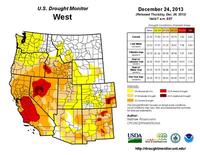
Advisory from UC Center for Hydrologic Modeling finds California’s statewide averages of snow, surface water, and soil moisture near 10-year lows. The threat of multi-year period of unsustainable groundwater depletion imminent if drought continues. The data show particularly steep water losses between November 2011 and November 2013, the early phase of the current drought. The researchers estimate that the Sacramento and San Joaquin River basins have already lost ten cubic kilometers of fresh water in each of the last two years — equivalent to virtually all of California’s urban and household water use each year.
-
-
Making the U.S. grid sturdier, smarter, and more secure to thwart blackouts

In August 2003, fifty million customers throughout the northeastern United States and southeastern Canada lost power for up to two days. More than ten years later, the U.S. electric power system continues to be challenged. In the United States, 149 power outages affecting at least 50,000 customers occurred between 2000 and 2004, a number which grew to 349 between 2005 and 2009. In 2012, the prolonged power outages in New York and New Jersey caused by Hurricane Sandy once again demonstrated the system’s vulnerability. A broad, multidisciplinary effort by Georgia Tech researchers aims to revolutionize the delivery of electricity, advance the smart grid, thwart blackouts, integrate renewable energy sources, and secure utilities from cyberattacks.
-
-
Smartphones to help find avalanche victims
Not a winter goes by without an avalanche incident. In the search for those buried beneath the snow, every second counts. On average, rescuers have fifteen minutes to recover victims alive. This is why an avalanche transceiver is an essential piece of kit for anyone spending significant time off-piste. These transceivers do not come cheap, however, ranging in price from 200 and over 500 euros — perhaps one reason why many walkers and skiers still do not carry one with them. Now smartphones equipped with functions of an avalanche transceiver should help locate the victims quickly.
-
-
"Envy-free” algorithm may help in settling disputes
Whether it is season tickets to Green Bay Packers’ games or silver place settings, divorce and inheritance have bred protracted disputes over the assignment of belongings. Now, a trio of researchers has found a method for resolving such conflicts in an envy-free way. The envy-free algorithm may be used by negotiators in intractable political or territorial disputes. “The problem of fairly dividing a divisible good, such as cake or land, between two people probably goes back to the dawn of civilization,” write the authors.
-
-
Eco-terrorist sentenced to five years and ordered to read Malcolm Gladwell’s book
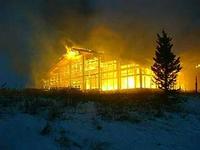
Last Monday, Chief U.S. District Judge Ann Aiken imposed a 5-year sentence on radical environmental activist Rebecca Rubin for her involvement in several acts of arson, including the burning of Vail Colorado’s Twin Elks Lodge which caused millions of dollars in damage. Rubin spent almost eight years living underground, giving herself up to the FBI last October. She pleaded guilty to arson, attempted arson, and conspiracy to commit arson in connection with a radical environmental group calling itself The Family. Judge Aiken also ordered Rubin to read Malcolm Gladwell’s 2013 book David and Goliath, explaining that Rubin might learn a thing or two about non-violent environmental advocacy while serving her sentence.
-
-
Quantum encryption for wiretap-proof communication a step closer

Polarized light, in which all the light waves oscillate on the same plane, forms the foundation for technology such as LCD displays in computers and TV sets, and advanced quantum encryption. There are two ways to create polarized light, but each has its problems: filtering normal unpolarized to block unwanted light waves (but here, half of the light emitted, and thereby an equal amount of energy, are lost), or using light which is polarized at the source (but here, polarization is either too weak or hard to control). Now there is a better way: By emitting photons from a quantum dot at the top of a micropyramid, researchers are creating a polarized light source with a high degree of linear polarization, on average 84 percent. As the quantum dots can also emit one photon at a time, this is promising technology for quantum encryption, a growing technology for wiretap-proof communication.
-
-
Senegal climate change-induced flooding reaching crisis proportions: UN
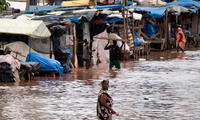
Margareta Wahlstrom, the head of the UN disaster risk, last week warned that climate change-induced flooding had reached crisis proportions in Senegal, with some towns and villages now finding themselves underwater for large parts of the year. Wahlstrom, who was in Senegal for a 3-day visit as part of the UN preparations for a new global disaster risk-reduction strategy, said that mayors of coastal and riverside towns and villages told her their streets were flooded ten months out of twelve.
-
-
Clouds influence how greenhouse gases affect climate
The warming effect of human-induced greenhouse gases is a given, but to what extent can we predict its future influence? That is an issue on which science is making progress, but the answers are still far from exact, say researchers. Indeed, one could say that the picture is a “cloudy” one, since the determination of the greenhouse gas effect involves multifaceted interactions with cloud cover.
-
-
National cyber complex to open next to Ben-Gurion University of the Negev campus
A new national cyber complex called CyberSpark will open at the Advanced Technology Park (ATP) which is located next to Ben Gurion University of the Negev. Fortune 500 companies Lockheed Martin and IBM announced they would invest in CyberSpark R&D facilities, joining other cybersecurity leaders Deutsche Telekom, EMC, RSA, and many startups. The 15-building ATP is the only type of complex of its kind in the world that includes Fortune 500 companies and cyber-incubators, academic researchers, and educational facilities as well as national government and security agencies. The CyberSpark will also include a high school geared toward science and technology.
-
-
Some citizens of low-lying Pacific island nations seeking climate-change refugee status
More and more resident of Pacific island nations and territories are trying to claim refugee status in Australia and New Zealand, arguing that rising sea levels, caused by climate change, are forcing them out of their homes and destroying their livelihood. The New Zealand High Court has rejected the refugee status petition of Loane Teitota and his family, citizens of Kiribati, a low-lying Pacific Island nation near the equator, saying that Teitota’s argument was “novel” and “optimistic.” The court cautioned that if the argument were adopted, then millions of people suffering from the effects of climate change would seek refugee status in New Zealand or any other country.
-
-
The 9 January chemical leak in West Virginia is the latest in a long history of industrial accidents
The chemical spill that affected the water source in nine West Virginia counties in early January is part of a long history of industrial accidents resulting from the concentration of chemical and coal-mining operations in the region. The 9 January spill, which saw coal-cleansing chemical which leaked from Freedom Industries’ storage tank into the Elk River, leaving more than 300,000 residents without access to clean tap water for days, is the latest in a history of pollution which has poisoned groundwater, spewed toxic gas emissions, and caused fires and explosions.
-
-
“Space cops” to help control traffic in space, prevent satellites from colliding

Collisions in space of satellites and space debris have become increasingly problematic. A team of scientists are using mini-satellites that work as “space cops” to help control traffic in space. The scientists used a series of six images over a 60-hour period taken from a ground-based satellite to prove that it is possible to refine the orbit of another satellite in low earth orbit.
-
-
Increase in wildfires may significantly degrade air quality, health in the future
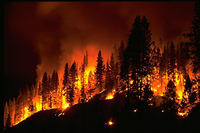
As the American West, parched by prolonged drought, braces for a season of potentially record-breaking wildfires, new research suggests these events not only pose an immediate threat to people’s safety and their homes, but also could take a toll on human health, agriculture, and ecosystems.
-
-
The combination of drought and warming climate places severe strain on California’s water supply
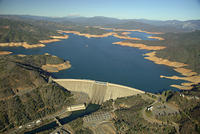
As stores of water in the West are reduced — whether by usage in drought, evapotranspiration in heat, or both — warming temperatures also see the snowpack on the wane. The two phenomena together could put severe strain on water supplies, with implications for ecosystems, industries, and people alike. Even at their most severe, the droughts of decades and centuries past did not occur in tandem with today’s degree of temperature change or have to contend with the demands of a population that in California alone now numbers above thirty-eight million residents. As needs for water grow ever greater, so, too, do the potential threats to its supply.
-
-
Cal Poly unveils ambitious cybersecurity educational initiative
Cal Poly, with a grant from the Northrop Grumman Foundation, has established a Cybersecurity Center, opened a new cyber lab, and is developing a cybersecurity curriculum with an ambitious set of goals in mind: educating thousands of students in cybersecurity awareness and readiness; producing experts in cyber technologies and systems, including many professionals who will serve the military and defense industry; and graduating cyber innovators who are prepared for advanced study and applied research in emerging cyber issues.
-
More headlines
The long view
New Technology is Keeping the Skies Safe
DHS S&T Baggage, Cargo, and People Screening (BCP) Program develops state-of-the-art screening solutions to help secure airspace, communities, and borders
Factories First: Winning the Drone War Before It Starts
Wars are won by factories before they are won on the battlefield,Martin C. Feldmann writes, noting that the United States lacks the manufacturing depth for the coming drone age. Rectifying this situation “will take far more than procurement tweaks,” Feldmann writes. “It demands a national-level, wartime-scale industrial mobilization.”
How Artificial General Intelligence Could Affect the Rise and Fall of Nations
Visions for potential AGI futures: A new report from RAND aims to stimulate thinking among policymakers about possible impacts of the development of artificial general intelligence (AGI) on geopolitics and the world order.
Smaller Nuclear Reactors Spark Renewed Interest in a Once-Shunned Energy Source
In the past two years, half the states have taken action to promote nuclear power, from creating nuclear task forces to integrating nuclear into long-term energy plans.
Keeping the Lights on with Nuclear Waste: Radiochemistry Transforms Nuclear Waste into Strategic Materials
How UNLV radiochemistry is pioneering the future of energy in the Southwest by salvaging strategic materials from nuclear dumps –and making it safe.
Model Predicts Long-Term Effects of Nuclear Waste on Underground Disposal Systems
The simulations matched results from an underground lab experiment in Switzerland, suggesting modeling could be used to validate the safety of nuclear disposal sites.
